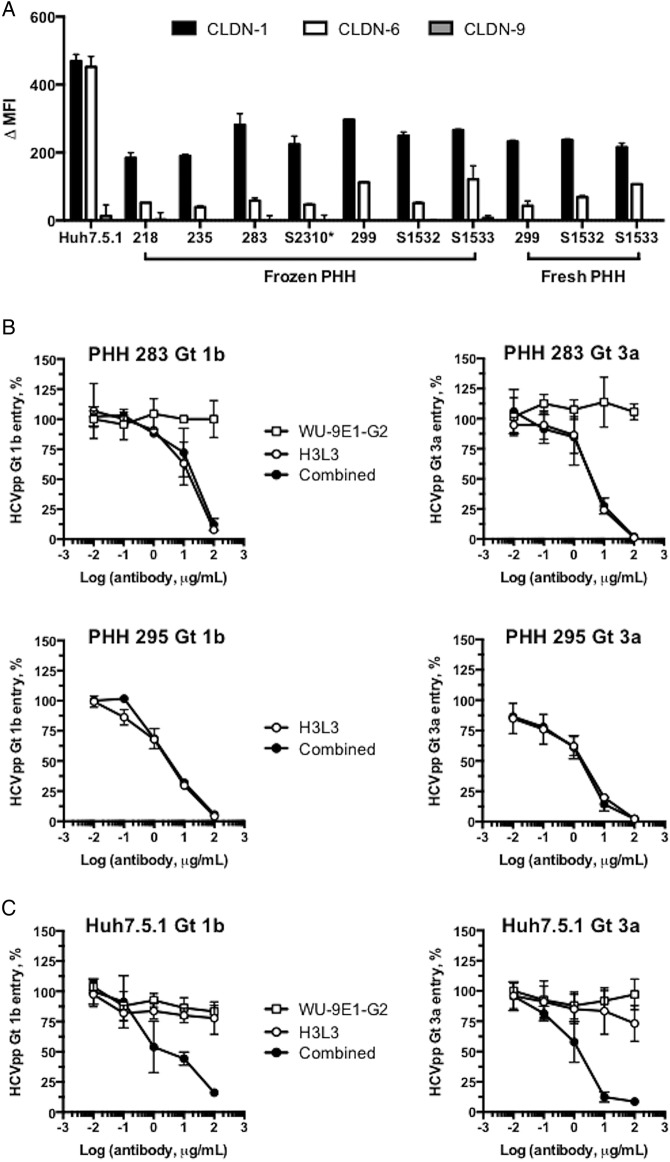Figure 4.
Tight junction protein claudin-6 (CLDN6) is not a functional HCV entry factor in primary human hepatocytes (PHH). (A) PHH express only very low surface levels of CLDN6 and CLDN9. PHH from four donors tested in inhibition experiments and three additional donors were treated with isotype control or CLDN1-specific, CLDN6-specific or CLDN9-specific monoclonal antibodies (20 μg/mL). Labelling was done either immediately following the isolation of PHH (fresh PHH) or using cryopreserved cells (frozen PHH). Expression of CLDN1, CLDN6 and CLDN9 is shown as delta median fluorescence intensity (ΔMFI). (B) Treatment of PHH with a CLDN6-specific mAb (WU-9E1-G2) had no effect on HCVpp infection. PHH were treated with serially diluted WU-9E1-G2 or H3L3, or with serially diluted H3L3 in combination with 20 μg/mL WU-9E1-G2, for 1 hour prior to incubation with HCVpp genotype 1b (HCV-J) or genotype 3a (S52). HCVpp entry was assessed by measuring luciferase activity after 72 hours. (C) Treatment of Huh7.5.1 cells with H3L3 in combination with WU-9E1-G2 inhibited HCVpp entry, in contrast to treatment with H3L3 alone or WU-9E1-G2 alone. Huh7.5.1 cells were treated with serially diluted WU-9E1-G2 or H3L3, or with serially diluted H3L3 in combination with 20 μg/mL WU-9E1-G2, for 1 hour prior to incubation with HCVpp genotype 1b (HCV-J) or genotype 3a (S52). HCVpp entry was assessed by measuring luciferase activity after 72 hours. Graphs show one experiment performed in duplicate (A and B) or two experiments performed in triplicate (C).

